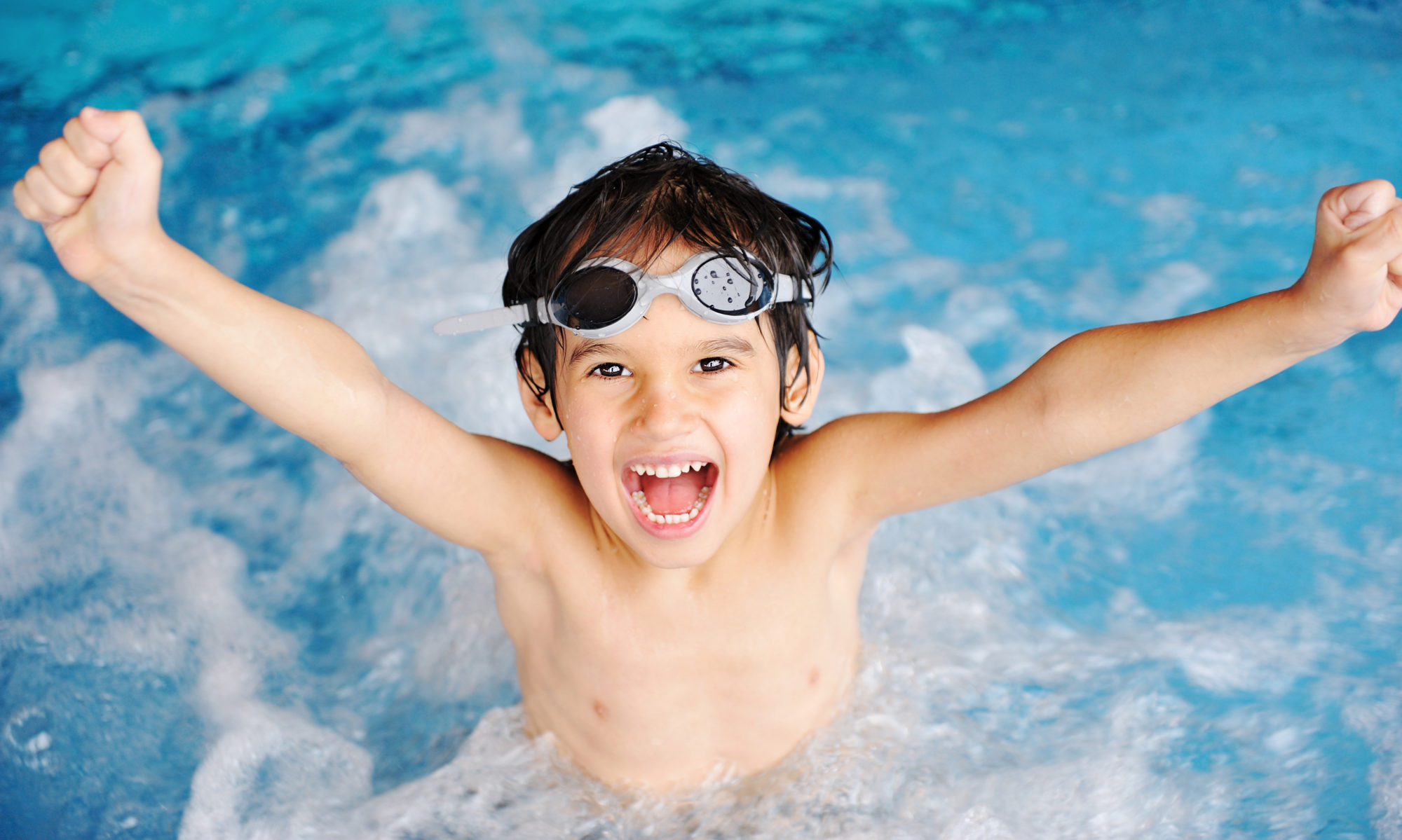The basics you’ve been teaching your kids so far will put them in the top ten percent of understanding of all swimmers. I’m all about making it fun and promoting water safety, but if you’d like to help your kids learn even more, you can focus on sophisticated refinements of swimming skills. Here are 8 tips to help your kids take their swimming to the next level.
- Use leverage. When he pulls his arm through the water, have your child bend at the elbow. A bent arm applies more force given the same amount of effort. Try this on land. Have your child pick up something with a bent arm and again with a straight arm. The bent arm makes it easier to move the same weight.
- Bend at the elbow. Have your child bend his arm at the elbow during the recovery phase of the stroke, the part of the stroke when his arm is returning to streamline position. Have him aim to have his arm enter the water just above his ear, instead of extended straight in front of him.
- Slice the water. Have your child try slicing into the water with his hand, with the thumb entering the water first.
- Rock and roll. Have your child try rolling onto his side as his hand enters the water. This rolling motion of the torso provides power. The sideways position of the water presents a smaller surface area to the water so that there’s less resistance. The angle of the shoulder when his body is on its side allows for greater range of motion. This is complex. It takes many hours of practice to master.
- Alternate legs. In addition to alternating with the arms, your child can practice alternating with his legs. When his right arm enters the water, have him try to kick first with his left leg.
- Play with timing. Have your child play with the timing of the rolling motion, of the arm recovery, of the movement of the arm into the water.
- Experiment with breath. Have your child experiment with the number of strokes he takes between breaths.
- Quality, not quantity. Have your child count the number of strokes it takes for him to swim the length of the pool. Can he focus on making each stroke better so that he can swim the length of the pool in fewer strokes?
If you’re a good-but-not-great swimmer, try some of these tips yourself. Not only will you get the fun of becoming a better swimmer, but also you’ll increase the empathy you have for your kids while they’re working on learning something new.
